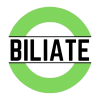Crafting effective pricing for bundled sponsorship packages across Instagram, YouTube, and TikTok is essential for maximizing your influence as a content creator.
Each platform offers distinct advantages, and knowing how to leverage and price these differences can make your packages more appealing to brands while enhancing your profitability.
So, how do you start crafting these impactful sponsorship packages?
And what pricing strategy ensures you’re both competitive and fairly compensated?
Let’s explore the nuances of pricing sponsorships on Instagram, YouTube, and TikTok and see how combining them into a single, attractive package can unlock new levels of partnership potential.

The Importance of Bundling Across Platforms
Bundled sponsorships are more than just a convenient deal; they’re a strategy that multiplies your reach.
When a brand collaborates with you across Instagram, YouTube, and TikTok, it benefits from diverse content styles—short-form trends, long-form storytelling, and visual engagement.
For you, bundling means securing bigger contracts and building long-term brand relationships.
Instagram: Capitalizing on Visual Engagement
Instagram is one of the most engagement-heavy platforms due to its focus on visuals and interactive features like Stories, Reels, and carousels.
When pricing your Instagram content, consider your audience’s engagement rate and how different post types perform.
A high-engagement carousel post or an impactful Reel can command higher prices.
To appeal to brands, create a bundle that mixes highly engaging Stories with Reels that highlight products, making the package comprehensive.
Example Strategy: If you typically charge $500 for a Story and $800 for a carousel post, you could create a bundle that includes both for $1,200. This setup encourages brands to opt for the package because they perceive added value at a slightly reduced rate.
YouTube: The Evergreen Content Goldmine
YouTube videos often attract higher sponsorship fees due to their longevity.
Unlike Instagram or TikTok content, a YouTube video remains relevant for months or even years, continuously bringing in views.
Pricing a YouTube video should factor in your subscriber count, average video views, and engagement rate.
Since YouTube videos require more production time and resources, brands understand the premium cost associated with them.
For bundled pricing, consider how a YouTube mention paired with Instagram promotion could amplify a brand’s message.
If you usually price a YouTube video at $1,000 and an Instagram post at $800, offering them together for $1,500 can be compelling.
This combination ensures the brand benefits from an in-depth product showcase and immediate visual storytelling on Instagram.

TikTok: Leveraging Viral Trends
TikTok’s unique strength lies in its viral nature. A well-executed post can reach millions overnight.
However, its fast-paced, trend-centric approach means pricing needs to reflect your past successes, follower interactions, and the likelihood of virality.
TikTok videos often cost less than YouTube content due to their brevity but can be priced higher based on your proven ability to start trends.
Integrating TikTok with Instagram Stories or a YouTube mention can make your package more attractive.
For example, a TikTok video priced at $600 paired with an Instagram Reel priced at $500 could be bundled at $950, adding value through cross-promotion and increased visibility.
Structuring Your Bundles
When crafting your bundles, tailor them to appeal to brands of different sizes and budgets.
Start with simple packages like a combined Instagram Story and TikTok post.
Gradually expand to comprehensive packages featuring YouTube videos, multiple Instagram posts, and TikTok challenges.
Sample Bundles:
- Starter Package: One Instagram Story and one TikTok post, priced with a 10% discount compared to individual purchases.
- Advanced Package: A YouTube video, one Instagram carousel post, and a TikTok challenge, priced to show the combined value with a strategic discount.
These combinations not only create a robust brand campaign but also demonstrate your ability to adapt your content across platforms seamlessly.
Negotiating and Positioning Your Bundles
Positioning your bundled sponsorship packages as a high-value investment for brands requires more than just attractive pricing.
Use your past analytics to back up your packages.
Highlight your average views, engagement rates, and case studies of past successful campaigns.
Customizing bundles to match the brand’s goals—whether they seek quick engagement on TikTok or long-term traction on YouTube—can also secure deals.
Provide a clear breakdown of what’s included in each bundle, emphasizing why each part is crucial for the campaign’s success. Brands appreciate transparency and understanding of where their budget is going.

Practical Example: How Jenna Leveraged Bundled Deals
Let’s say Jenna, a lifestyle influencer, pitched a bundled sponsorship to a skincare brand.
Her package included one YouTube review video, an Instagram carousel post, and a TikTok trend challenge.
Individually, these would have been priced at $2,000, $700, and $600, respectively.
By offering the package for $2,900 instead of $3,300, she provided an enticing deal that maximized the brand’s reach across all three platforms.
The bundled approach increased engagement and provided a stronger ROI for the brand, securing a repeat sponsorship.
Final Thoughts
Bundled sponsorships can transform your approach to social media monetization.
By understanding the unique strengths of Instagram, YouTube, and TikTok, you can create packages that are appealing to brands and profitable for you.
Start by assessing your metrics, experimenting with different combinations, and fine-tuning your approach based on feedback.
Before you know it, your cross-platform sponsorship strategy will be a sought-after asset in the creator economy.

Pingback: Here Why Transparency Matters in Affiliate Marketing in 2024 » Outdoor Adventure